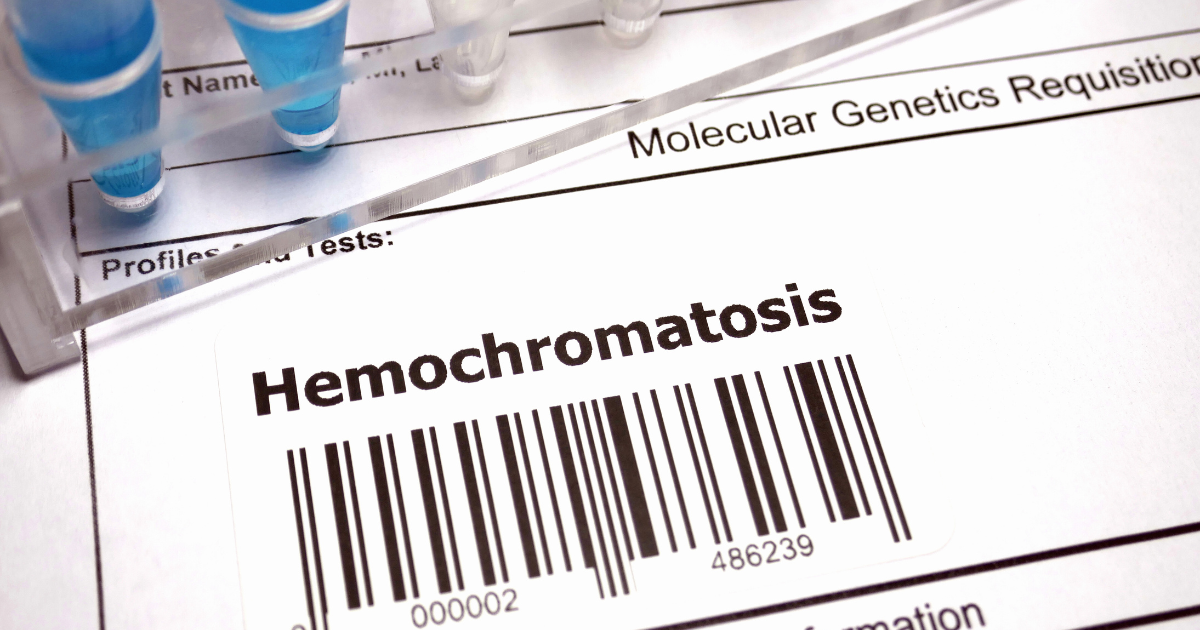Phlebotomy for hemochromatosis is the most effective treatment for managing this genetic condition, which is characterized by excessive iron accumulation in the body. This buildup can lead to serious health complications if not properly addressed. This comprehensive guide will delve into the essential role of phlebotomy in treating hemochromatosis, highlighting its benefits and outlining what patients can expect throughout the treatment process. Aimed at individuals seeking to understand their treatment options, particularly those considering or undergoing phlebotomy, this article provides an informative and supportive overview, helping to educate and reassure patients and their families.
| Key Takeaways: Phlebotomy for hemochromatosis |
| Phlebotomy is the primary treatment for hemochromatosis, effectively reducing iron levels in the body. |
| Regular monitoring of iron levels through blood tests is essential to tailor the phlebotomy schedule. |
| Early diagnosis and treatment can prevent serious complications such as liver cirrhosis, heart disease, and diabetes. |
| Maintenance phase involves less frequent phlebotomy sessions but requires ongoing vigilance. |
| Secondary and neonatal hemochromatosis require specialized treatments beyond standard phlebotomy. |
Understanding Hemochromatosis
Hemochromatosis is an inherited condition where the body absorbs too much iron from the diet. Excess iron is stored in various organs, particularly the liver, heart, and pancreas, leading to severe conditions such as cirrhosis, heart disease, and diabetes. Early identification and treatment are critical for avoiding these consequences.
Primary Hemochromatosis: This form is genetic and the most common type. It is often caused by mutations in the HFE gene, which regulate iron absorption.
Secondary Hemochromatosis: This type results from another medical condition or treatment, such as repeated blood transfusions, chronic liver disease, or certain types of anemia.
Neonatal Hemochromatosis: This rare form affects newborns and is not inherited but occurs due to an immune system attack on the liver of the fetus.
How Phlebotomy Treats Hemochromatosis
Phlebotomy, also known as therapeutic bloodletting, is the frontline treatment for managing hemochromatosis. This procedure is both safe and cost-effective, providing a direct method to reduce the body’s iron levels.
Mechanism of Phlebotomy:
- Iron Removal: By drawing about a pint of blood at regular intervals, phlebotomy effectively reduces iron stores in the body. Each session removes a significant amount of iron, helping to lower the overall iron burden.
- Frequency and Volume: The initial phase of treatment often involves weekly or bi-weekly sessions. The exact frequency and volume depend on the patient’s iron levels, which are regularly monitored through blood tests measuring serum ferritin and transferrin saturation.
The Phlebotomy Procedure
Phlebotomy is typically performed in a medical setting, such as a blood bank or clinic, similar to routine blood donation. Here’s what patients can expect during the process:
Preparation:
- Medical Evaluation: Before starting phlebotomy, patients undergo a thorough medical evaluation to determine their iron levels and overall health status.
- Hydration and Nutrition: Patients are advised to stay hydrated and have a light meal before the procedure to prevent dizziness and ensure a smooth process.
During the Procedure:
- Blood Draw: A healthcare professional inserts a needle into a vein, usually in the arm, to draw blood. Each session normally lasts 30-45 minutes.
- Monitoring: Patients are closely monitored for any adverse reactions, although serious complications are rare.
Post-Procedure:
- Rest and Recovery: Patients are advised to rest and avoid strenuous activities immediately after the procedure. Drinking fluids and eating a healthy snack can help replenish energy levels.
- Follow-Up Tests: Regular blood tests are crucial to monitor iron levels and adjust the frequency of phlebotomy sessions.
Benefits of Phlebotomy
Phlebotomy offers numerous benefits for individuals with hemochromatosis:
- Symptom Relief: Reducing iron levels can alleviate symptoms such as fatigue, joint pain, and abdominal discomfort.
- Prevention of Complications: Regular phlebotomy helps prevent severe complications like liver cirrhosis, heart disease, and diabetes by maintaining iron levels within a normal range.
- Improved Quality of Life: Many patients experience an overall improvement in well-being and energy levels after starting phlebotomy.
Maintenance Phase
Once iron levels are normalized, patients enter a maintenance phase, where the frequency of phlebotomy sessions is reduced. This phase involves drawing blood every 1 to 3 months, depending on individual needs. Ongoing monitoring through regular blood tests remains essential to ensure iron levels stay within the target range.
Special Considerations
Secondary Hemochromatosis:
- For individuals who develop hemochromatosis due to repeated blood transfusions (secondary hemochromatosis), phlebotomy may not be feasible. Instead, doctors may prescribe chelation therapy, which involves medications that bind to excess iron and facilitate its excretion through urine.
Neonatal Hemochromatosis:
- Newborns with neonatal hemochromatosis require specialized treatments such as exchange transfusions and intravenous immunoglobulin (IVIG) therapy.In severe situations, a liver transplant may be indicated.
Managing Complications
While phlebotomy is effective in preventing complications of hemochromatosis, some patients may already have advanced conditions at the time of diagnosis:
- Liver Conditions: For those with cirrhosis or liver cancer, phlebotomy alone may not suffice. Medical management of cirrhosis includes medications, minor procedures, and potentially liver transplantation.
- Cardiac Issues: Heart disease related to iron overload requires specialized cardiac care alongside phlebotomy.
Prevention and Early Detection
While primary hemochromatosis cannot be prevented, early detection through genetic screening and regular monitoring can significantly reduce the risk of complications. Individuals with a family history of hemochromatosis should discuss testing options with their healthcare provider.
Secondary Hemochromatosis Prevention:
- Early intervention with chelation therapy for patients requiring frequent blood transfusions can help prevent iron overload.
- Pregnant women at risk for neonatal hemochromatosis should receive appropriate prenatal care and monitoring.
FAQs: Phlebotomy for hemochromatosis
What is the typical frequency of phlebotomy sessions for hemochromatosis?
Initially, patients may need a phlebotomy once or twice a week. Once we normalize iron levels, we decrease the frequency to every 1 to 3 months.
Can phlebotomy cure hemochromatosis?
Phlebotomy cannot cure hemochromatosis, but it can effectively manage and control iron levels, preventing complications and improving quality of life.
Are there any side effects of phlebotomy?
Most patients tolerate phlebotomy well. Common side effects include temporary dizziness, fatigue, and bruising at the needle site. Serious complications are rare.
Can hemochromatosis patients donate their blood for transfusions?
If it meets safety rules, we may use blood from donors with hemochromatosis for transfusions.
Is phlebotomy necessary for all types of hemochromatosis?
Phlebotomy treats genetic hemochromatosis by removing excess iron from blood. Secondary hemochromatosis, often due to blood transfusions, may require chelation therapy instead.
What occurs if we do not treat hemochromatosis?
Untreated hemochromatosis can lead to serious health issues, including liver cirrhosis, heart disease, diabetes, and joint damage due to iron overload.
How does phlebotomy compare to chelation therapy?
Phlebotomy is generally more effective and less expensive than chelation therapy for reducing iron levels in primary hemochromatosis. When phlebotomy is not an option, doctors use chelation therapy. This is the case in patients with secondary hemochromatosis.
What lifestyle changes can help manage hemochromatosis?
Patients with hemochromatosis should avoid iron supplements and limit their intake of vitamin C, which enhances iron absorption. They should also limit alcohol consumption and avoid eating raw seafood to reduce the risk of infections.
How often should patients with hemochromatosis have their iron levels checked?
During the initial treatment phase, patients may need monthly blood tests. Once they reach the maintenance phase, they can reduce the frequency. They should go once every three to six months, as their healthcare provider advised.
Can children inherit hemochromatosis from their parents?
Yes, hemochromatosis is a hereditary condition. Because they are more likely to inherit the gene abnormalities that cause hemochromatosis, children of parents who have the illness should undergo screening.
What is the prognosis for someone with hemochromatosis undergoing phlebotomy?
With regular phlebotomy and proper medical management, individuals with hemochromatosis can live normal, healthy lives. Early detection and consistent treatment are key to preventing severe complications.
Conclusion
Phlebotomy for hemochromatosis is a proven, effective treatment that can significantly improve the quality of life for those affected by this condition. By understanding the process, benefits, and ongoing management involved, patients can take an active role in their treatment and work towards maintaining optimal health.
Phlebotomy Now School is dedicated to providing comprehensive education and training in phlebotomy, empowering healthcare professionals to deliver high-quality care to patients with hemochromatosis and other conditions. For more information on our programs and how we can help you advance your career, visit our website or contact us today.
Sign Up Today & Become a Certified Phlebotomist Fast!
Managing hemochromatosis? Learn how phlebotomy can help at Phlebotomy Now School. Join us in improving patient care through skilled practice.







